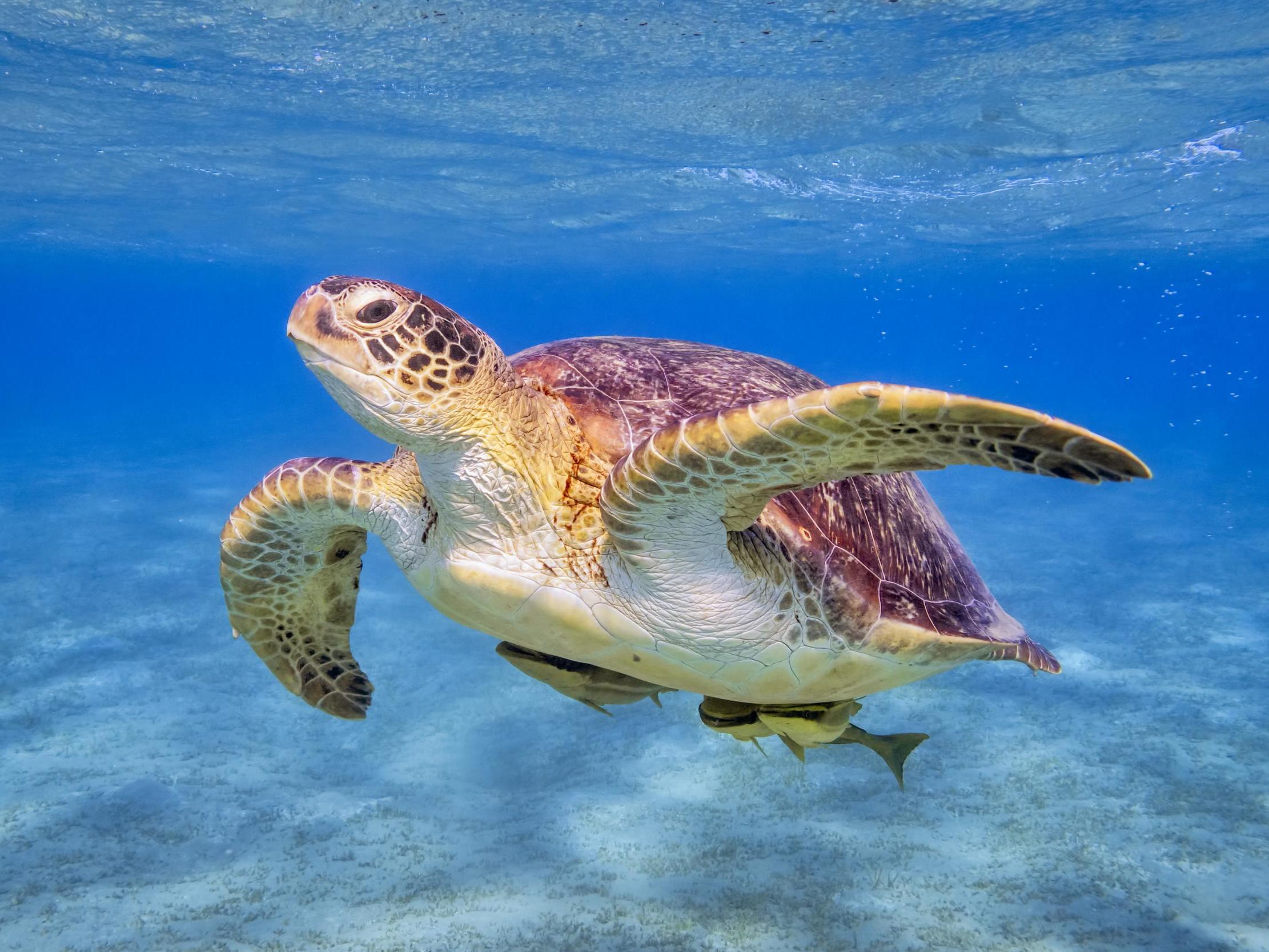Endangered green turtles now increasing in numbers, study of Pacific coral reefs finds
Protective measures which began in 1970s could be paying off in allowing green turtle populations to rebound, researchers say

Endangered green turtle populations are increasing on some coral reefs, according to an in-depth study of populations around islands in the Pacific.
Listed as “endangered” by the International Union for the Conservation of Nature (IUCN) and therefore protected, they have been vulnerable to human exploitation in the past for food.
Hunting and egg poaching have also affected their numbers.
The destruction of coral reefs, through climate change and construction, building on nesting sites and vulnerability to pollution and entanglement in fishing nets have all impacted turtle populations.
But according to a large-scale study by Monterey Bay Aquarium research scientist Sarah Becker and her colleagues, some populations were growing in number.
Previous land-based surveys of breeding and nesting sites have provided important evidence of population sizes, but have been “limited in scope” and lack “confirmation from the ocean where the turtles spend the vast majority of their time”, the authors wrote in the journal Plos One.
To study the density of the populations of green turtles and hawksbill turtles, which are both coral-dwelling species, they combined data from 13 years of in-water visual surveys of turtle abundance near 53 islands, atolls, and reefs throughout the US Pacific.
They hoped this would also enable them to understand further environmental and anthropogenic factors that have driven population trends.
During the surveys, a slow-moving boat towed pairs of divers at about 15 metres below the surface, where they recorded details of habitat and sea life as it came into view. In all, the surveys covered more than 7,300 linear kilometres and observed more than 3,400 turtles of the two species.
Survey data showed that American Samoa had the highest density of hawksbills, while the Pacific Remote Islands Area, a mostly uninhabited region about a thousand miles southwest of Hawaii, had the most green turtles.
Hawksbill numbers were far lower (less than 10 per cent) than green turtle counts, indicating that many conservation threats still exist for this species.
The researchers said the data showed the density of green turtles was driven primarily by ocean temperatures and productivity, but also suggested effects from historical and present-day human impacts.
Over the survey period, green turtle populations were either stable or increased.

While this is welcome news, the authors noted that despite some protective measures beginning in the 1970s, “current populations are still at a fraction of historic levels”.
The lowest density but the highest annual population growth was found in the Hawaiian Islands, which the researchers said suggested protective regulations could be paying off in allowing green turtle populations to rebound.
Ms Becker said: “This study represents one of the largest sea turtle population surveys ever conducted, filling critical gaps on in-water abundance and drivers of population density. Across the tropical Pacific several locations held impressive densities of sea turtles, and in all regions densities were driven by bottom-up forces like ocean temperatures and productivity and top-down forces such as human impacts.”
Join our commenting forum
Join thought-provoking conversations, follow other Independent readers and see their replies
Comments